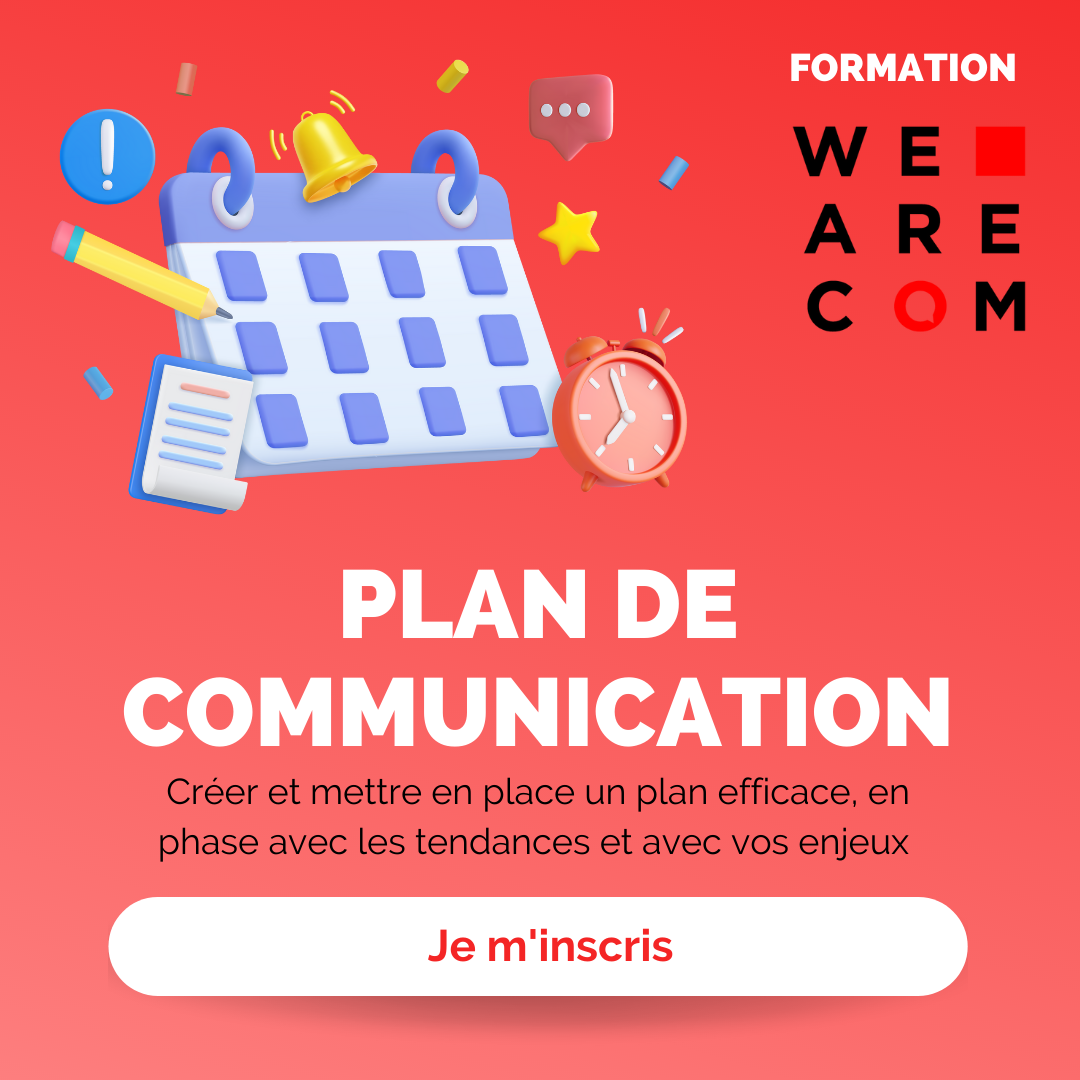To succeed in your communication plan, it is essential to define the audience for your actions – and to ensure its targeting. Establish a communication plan is therefore not limited to situating your company in the competitive landscape or choosing communication tools.
The We Are COM team invites you to discover how to define your audience by 3 steps: : the segmentation, targeting and positioning.
1. Segment your audience using personas
The first step is the segmentation of the market. To do this, it is necessary to establish types of customers ou person. For this, we can base ourselves on socio-economic criteria (CSP, income, level of studies, etc.), socio-demographic criteria (age, sex, family situation, place of residence, etc.), psychological criteria (values, lifestyle, center of interest) or criteria relating to purchasing behavior (consumption habits, use of products, etc.).
Based on these criteria, and perhaps supplementing with surveys, you can define several types of customers. This is what we call the buyer persona. This involves establishing for each target audience a detailed description of their profile, their purchasing habits, their interests and their motivations. The persona is a very effective tool for optimizing the targeting of your communication actions. Invented by Alan Cooper in 1999, this concept allows you to draw up a real biography of your typical customer!
The persona will allow you to define how to address your target, with what content and through what channel.
2. Targeting at the heart of the communication plan
Targeting comes after segmentation. It allows you to personalize your actions according to growing segments, without wasting your energy on segments with low potential for your business.
From one campaign to another, the targeting can vary: in fact, you can have a range of products (and therefore a communication plan) intended for young retirees and another for working people, for example.
Several targeting strategies are possible:
- la differentiated communication involves developing a product for one market segment only. This targeting makes it possible to meet demand by offering customers a product that exactly meets their expectations. Products developed in this way are generally more expensive;
- la mass communication consists of developing a product that meets the expectations of several market segments. Generally, the products developed have a fairly low price
- la multi-segment communication consists of developing several products to reach several segments of the market. This is, for example, the type of targeting used by car dealers: mini-city cars for young, urban customers, city cars for customers who only travel around town, compact sedans for customers who travel around town but is required to make long journeys, family sedans for families, crossovers for customers who seek, above all, the pleasure of driving…
3. Positioning, final stage of targeting
After having segmented the market and established the targeting strategy to reach your personas, there remains a third step to accurately reach your audience: positioning.
Positioning is how you want the targeted customer to imagine your business. There are several types of positioning:
- le functional positioning, which is based on the function of the product and its usefulness to the buyer. This is the case of Kinder Bueno (“pleasure for every little hunger”) or Actimel (“Strengthens your natural defenses”, etc.); for example.
- le psychological positioning, which is based on the deep motivations of consumers rather than on a utilitarian need. Apple (“Think different”) and Lacoste (“Become what you are”) embody it.
- le symbolic positioning, which seeks to create a sense of belonging among consumers. We can cite Affligem (“Beer of initiates since 1074”), Herta (“The taste for simple things”) or even Armani (“Elegance transcends time”) on this positioning.
To establish your positioning, you must first have defined your target clientele. The positioning will result from the identified segments and the chosen targeting strategy. You must also establish a description of the product and your brand that meets the expectations of the targeted segment, as well as the reason for the product and the values of your brand.

An example of “functional” positioning with KIABI, “Fashion at low prices”
A communications plan to speak to those who matter
Audience segmentation is not just another step in communication planning: it is the very heart of a successful strategy. By accurately understanding and categorizing the different segments of your audience, you can tailor your message to resonate in a relevant and personal way. This not only builds engagement and loyalty among your audience, but also maximizes the ROI of your communications efforts.
In a world saturated with information, where every brand is fighting for attention, targeted communication is your best asset. By segmenting your audience, you are not talking to everyone: you talk to those who really matter. And ultimately, it is this precision that will transform a simple interaction into a lasting and fruitful relationship!







